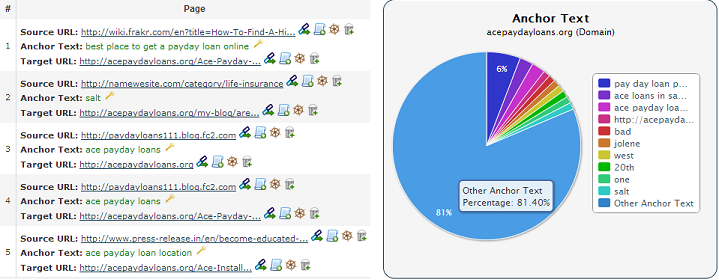This week, I’m going to continue our discussion about link building, but with a twist…Ladies and Gents, it’s time to visit the Dark Side, where spam and bad links on your site are like sith lords in the Deathstar. (Ok I promise: no more Star Wars analogies after this).
All silliness aside, if you’re new to inbound marketing and SEO management, you may not have experienced the detrimental effects a bad link can have on a website; but know this: they are referred to as “bad” for a reason. Bad links can really hurt your PageRank, TrustRank, and your customers’ perception of your business; but spam isn’t something your website can’t recover from, with the right tools. So I present to you…the SEO Toolbox! (pause for dramatic effect)
Tool no. 1: Hard Hat
Safety first, right? Anti-virus software is the hard hat for your computer. It protects your computer from crashing and getting infected with worms, trojan horses, and other lovely things; so when you start making inquiries into these bad links, make sure your firewall is on and your anti-virus software is up to date. Some of this spam is NASTY and could really mess with your operations if you’re not prepared for it. So before you try to stop spam, make sure it isn’t going to stop you.
Tool no. 2: Spam Finder
Like a stud finder finds the beams in your walls that you can’t see, you need to be able to spot and identify bad links so that you can stop spam from derailing your site. Spammy links and pages often tote a combination of these characteristics:
- Keyword stuffing: have you ever read a sentence like this? “You should get a payday loan from Payday Loan of Texas because Payday Loan of Texas provides the best payday loans of any other payday loan provider.” This is a prime example of keyword stuffing. Spammers use this technique in attempt to shoot to the top of search results. And as you can see, it looks ridiculous.
- Invisible Text and Cloaking: Invisible text is just that: invisible. Spammers write it into their codes so that search engines can see it, but site visitors can’t. In order to find this stuff, you’ll need to take a closer look at their HTML.
- Paid backlinks: It used to be that for mere dollars, you could buy thousands of links pointing to your site to help boost your PageRank without penalty; this is not the case anymore.
- Unnatural URLs: Paid backlinks and other types of spam can be often be easily spotted by looking at the URL for the link. If it looks sketchy, it probably is. URLs that end in .ru, .de, .ml, or something other than your typical .com and .org, are usually spam. something like, “www.lose-thirty-lbs-right-now.com” is also probably junk.
- Scraping and Spinning: Have you ever seen a page that had complete gibberish on it? The spammers that created the content probably generated it through scraping and spinning. Scraping occurs when a spammer steals content from another site. Spinning occurs when scraped content gets manipulated, often by translating it into many other languages before translating it back to English. Through spinning the word get changed enough that the content appears original, and is therefore more likely to rank higher in search.
Tool no. 3: Majestic Multi-Tool
Majestic SEO is a link indexing tool that crawls backlinks for a URL, domain, and/or subdomain as far back as 5 years, as well as the anchor text and keywords associated with those links. You can use this tool to crawl your own site for backlinks, or to further investigate a known piece of spam. If you’ve never worked with this program before, check out our Majestic SEO tutorial to help you better understand what you’re looking at.
To show you how Majestic SEO works, I’ve entered a backlinks search for the spam URL, “acepaydayloans.org”.
As you can see, all of the source URLs and nearly all of the anchor text keywords are total nonsense. If you find links like these when running a report for your own site, you may run into some junk like this. Once you determine which links are bad, you can put them all into a profile, or “link bucket”, to keep them separate from good link sources.
Tool no. 4: Spammer Hand Saw
So in theory, you can use a saw to cut off the parts of a project you don’t want; but notice I said hand saw, not power saw. Unfortunately there’s no quick fix to getting rid of bad links. In order to stop spam in its take over and get out from under your Google penalty, you’re gonna need a little elbow grease.
The first step in cutting away bad links is contacting the webmaster for each spammy site in your bucket and asking them (nicely) to remove the link that is causing problems for your page. Wait a week or so and see which links come down. In the meantime, create a log that shows which links you’ve identified as spam, and the actions taken to get them removed. If a site refuses your requests to get the bad links removed, log that as well.
Hopefully, your spam link bucket will start dwindling. For the remaining bad links, you can create a webspam report to send to Google in request to have your penalty removed. In your request, include your log of each bad link to show Google that you made an honest effort to get it removed.
Now all that is left to do is wait. It may take several weeks, but through your continued effort to stop spam, Google should restore you to your former PageRank glory.


